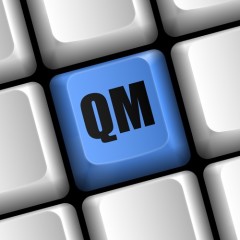Quality management as an organizational instrument
Quality management is a useful instrument for organizing a company.
- It assists the company in
- lowering the costs arising during production,
- meeting customer demands,
- strengthening confidence in the quality of the products
and finally,
- in warding off claims for liability that can arise from products.
Cost reduction
As customers demand more and more from products, the expenses incurred due to product rejects and reworking increase considerably. But quality cannot just be tested at the end of production - it has to be systematically planned, implemented and documented in all areas of the company, from development to production planning, production, storage and shipping right through to customer care. Reducing errors and their causes also brings down production costs. Clear definitions of employees' responsibilities and powers and process specifications also help to cut costs. They prevent disputes about responsibility and eliminate any repetition of work processes.
Customer requirements
The quality management standards were initially intended as an aid, on which customers and suppliers could base contractually agreed quality management specifications. The customer's auditors conduct audits to determine whether the supplier is adhering to the agreements. This results in real "audit tourism". Using the services of neutral certification bodies is an effective alternative. As part of their own supplier assessment, the certified companies and public contract awarders increasingly require their suppliers to provide evidence of a QM system too. This also affects small and medium-sized enterprises. Consequently, the implementation and certification of a QM system has become an important means of remaining competitive.
Raising confidence
In the past, product quality was primarily determined by the craftmanship of the workers participating in the production process. "Made in Germany" was always a guarantee for above-average product quality. The high quality stemmed from the high level of training of the workers and managers involved in production. However, with product requirements increasing all the time, companies need more than just a well-trained workforce. They have to develop a system that covers all areas of their business and defines systematic targets for individual processes. By doing so, they can bring about a measurable increase in product quality.
Protection against liability claims
The Product Liability Act (Produkthaftungsgesetz), which came into effect on 1 January 1990, imposes a particularly high responsibility on the manufacturer with regard to the products it manufactures. However, the manufacturer is not required to replace a product if, for example, the product did not have the fault that caused the damage when the manufacturer placed it on the market, or if the fault could not have been detected using state-of-the-art means at the time when the manufacturer placed the product on the market. Consequently, in accordance with Section 1 of the Product Liability Act, the manufacturer is obliged to furnish evidence that the fault did not exist or could not have been detected when it was originally placed on the market. Manufacturers must be able to prove that they did everything necessary to prevent or detect the fault. They can do this if they have a well-documented and effective QM system that provides them with a complete record of their fulfilment of their duties.
Contact
Alte Heerstraße 111
53757 Sankt Augustin
Tel: +49 30 13001-4566
Fax: +49 30 13001-864566
